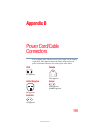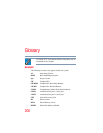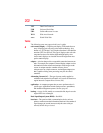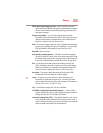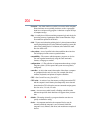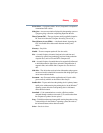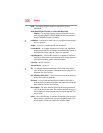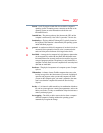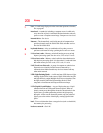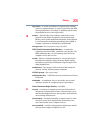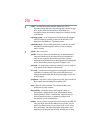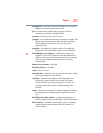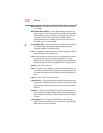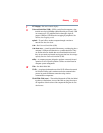
Glossary
207
format—(verb) To prepare a blank disk for use with the computer’s
operating system. Formatting creates a structure on the disk so the
operating system can write information to the disk or read
information from it.
frontside bus—The primary pathway (bus) between the CPU and the
computer’s main memory. Also called “system bus.” See also bus.
function keys—The keys labeled F1 through F12, typically located on
the keyboard. Their function is determined by the operating system
and/or individual programs.
G
ground—A conductor to which all components of an electric circuit are
connected. It has a potential of zero (0) volts, is connected to the
earth, and is the point of reference for voltages in the circuit.
H
hard disk—A storage device composed of a rigid platter or platters that
can be magnetically coded with data. Hard disks hold much more
information than some external media and are used for long-term
storage of programs and data. The primary (or only) hard disk in a
computer is usually fixed, but some computers have secondary hard
disks that are removable.
hardware—The physical components of a computer system. Compare
software.
Hibernation—A feature of many Toshiba computers that saves to the
internal storage drive the current state of your work, including all
open files and programs, when you turn the computer off. When
you turn on the computer again, your work is returned to the same
state it was when the computer was turned off. See also Sleep,
Suspend.
hot key—(1) A feature in which certain keys in combination with the
Fn
key can set system options or control system parameters, such as the
battery save mode. (2) A key or combination of keys that activates a
memory resident program.
hot swapping—The ability to add or remove devices from a computer
while the computer is running and have the operating system
automatically recognize the change.



